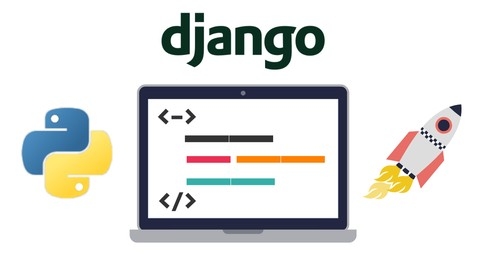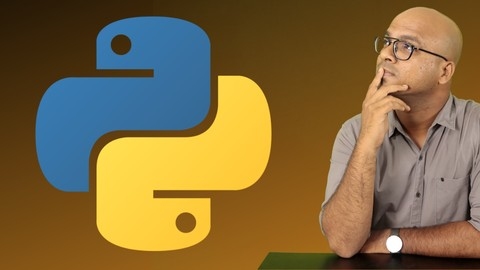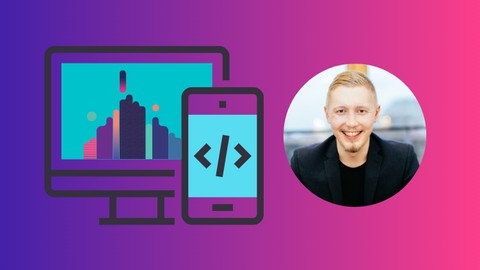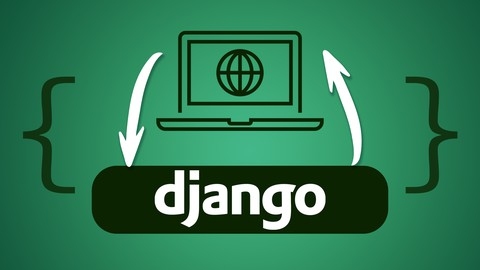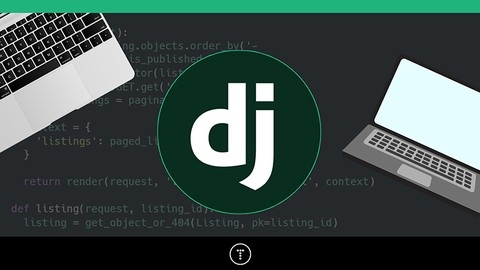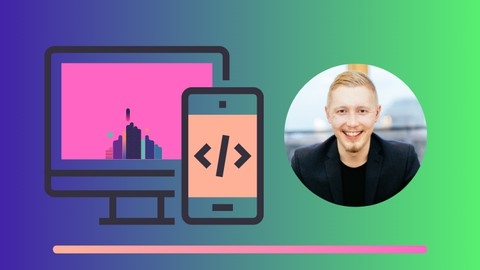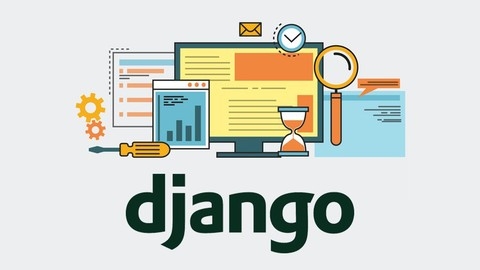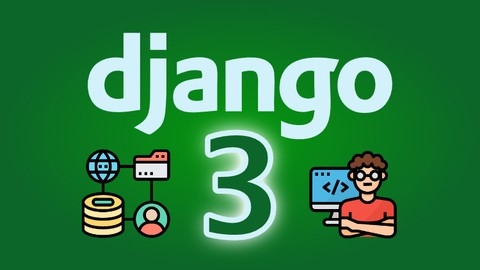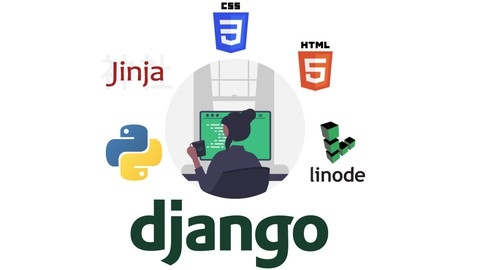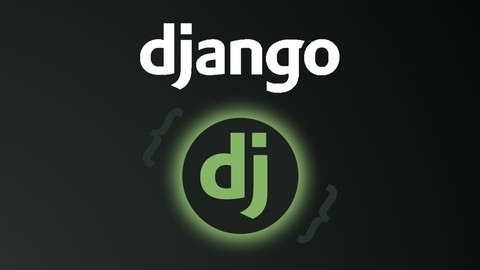Django is a powerful Python-based web framework that simplifies the process of building dynamic and feature-rich websites.
It’s a popular choice for developers, thanks to its robust features, clear structure, and active community support.
Learning Django can open doors to exciting opportunities in web development, allowing you to create everything from simple blogs to complex e-commerce platforms.
Finding the right Django course on Udemy can be overwhelming, with a vast array of options available.
You’re looking for a course that’s comprehensive, engaging, and taught by experienced instructors, but also fits your learning style and experience level.
You want a course that not only teaches you the theory but also provides hands-on projects and practical applications to solidify your understanding.
We’ve reviewed countless Django courses and based on our analysis, "Python and Django Full Stack Web Developer Bootcamp" stands out as the best overall course on Udemy.
This comprehensive program covers everything from the fundamentals of web development to advanced Django concepts and deployment, making it suitable for both beginners and those looking to level up their skills.
The course is packed with practical projects, real-world examples, and expert guidance, ensuring you gain the necessary skills to build impressive Django applications.
While this is our top recommendation, there are many other great Django courses available on Udemy, each tailored to different learning styles and goals.
Keep reading to discover our full list of recommendations, including options for beginners, intermediate learners, and those looking to specialize in specific areas like REST APIs or Django’s advanced features.
Python and Django Full Stack Web Developer Bootcamp
The course starts by covering the fundamentals of front-end web development, including HTML, CSS, Bootstrap, JavaScript, jQuery, and the Document Object Model (DOM) for creating interactive websites.
Then it dives into Python programming, teaching you the basics like numbers, strings, lists, dictionaries, tuples, sets, booleans, control flow, and functions.
It also covers more advanced Python concepts like Object Oriented Programming (OOP), errors and exceptions, regular expressions, modules, and decorators.
Once you have a solid grasp of Python, the course introduces the Django web framework.
You’ll learn how to create Django projects and applications, work with models, templates, views, URL mappings, and static files.
It covers forms for accepting user input, model forms, and form validation.
The course goes beyond the basics by teaching you how to customize Django templates using template inheritance and custom filters.
You’ll also learn about user authentication, passwords, and deploying your Django projects to production using services like PythonAnywhere and GitHub.
Additionally, the course covers advanced topics like Class-Based Views (CBVs) for more efficient coding and customizing the Django admin interface.
There are two major projects where you’ll build a blog site and a social media clone from scratch, applying everything you’ve learned.
Python and Django for Beginners
The course begins by installing Python and familiarizing you with variables, data types like lists and tuples, and basic operations.
You’ll learn to work with user input, conditionals, loops, and even print patterns.
As you progress, you’ll dive into arrays and the powerful NumPy library for scientific computing.
The course dedicates several sections to core programming concepts like functions, modules, and object-oriented programming (OOP).
You’ll understand classes, objects, inheritance, polymorphism, and even advanced topics like decorators and lambda functions.
Once you have a solid grasp of Python fundamentals, you’ll explore algorithms for searching (linear, binary) and sorting (bubble, selection sort).
You’ll also learn to connect Python programs to databases like MySQL using tools like MySQL Workbench.
The real highlight is the extensive coverage of Django, the high-level Python web framework.
You’ll build your first Django app, master the template language, handle HTTP requests, implement models and views, work with the admin panel, and even add user authentication.
Along the way, you’ll pick up essential skills like version control with Git and GitHub, using IDEs like PyCharm and Sublime Text, and working with Jupyter Notebooks.
The course even touches on multi-threading and file handling.
Build a Backend REST API with Python & Django - Advanced
The course follows a test-driven development (TDD) approach, ensuring your code is thoroughly tested and maintainable.
You’ll start by setting up your development environment, including installing necessary tools like Python, Django, and Docker.
The course will walk you through creating a new Django project, configuring Docker Compose for containerization, and setting up continuous integration/continuous deployment (CI/CD) with GitHub Actions.
The course emphasizes the importance of test-driven development (TDD) and teaches you how to write effective unit tests using Django’s testing framework.
You’ll learn about mocking, testing web requests, and common testing pitfalls.
One of the first tasks is to create a custom user model for your Django project.
You’ll learn how to normalize email addresses, require email input, and add support for creating superusers through the command-line interface (CLI).
Next, you’ll configure the Django admin to work seamlessly with your custom user model.
This includes listing, modifying, and creating users through the admin interface.
Proper documentation is crucial for any API, and this course covers auto-generating API documentation using Django REST Framework’s drf-spectacular package.
You’ll learn how to set up Swagger UI for interactive documentation.
With the foundations in place, you’ll dive into building a user API.
This includes creating user endpoints for registration, authentication (using JSON Web Tokens), and managing user profiles.
The core of the course revolves around building a comprehensive recipe API.
You’ll learn how to create, list, retrieve, update, and delete recipes.
Additionally, you’ll implement features like uploading recipe images, managing tags, and handling ingredients.
To enhance the API’s functionality, you’ll implement filtering and searching capabilities.
This will allow users to filter recipes based on tags, ingredients, or other criteria, making it easier to find specific recipes.
Finally, the course covers deploying your Django REST API to Amazon Web Services (AWS) using Docker.
You’ll learn how to create an AWS account, set up a virtual server (EC2 instance), configure the necessary services, and deploy your application using Docker Compose.
Throughout the course, you’ll gain hands-on experience with various Django concepts, such as models, views, serializers, and viewsets.
The course also covers advanced topics like nested serializers, handling static files with Django and Docker, and refactoring for better code organization.
By the end of this course, you’ll have a solid understanding of building robust and scalable REST APIs with Python, Django, and the Django REST Framework.
You’ll be equipped with the skills to develop and deploy your own APIs, following industry best practices and adhering to test-driven development principles.
Python Django - The Practical Guide
The course starts by introducing you to Django and its prerequisites, guiding you through setting up your development environment.
You’ll then dive into core Django concepts like URLs, views, templates, and static files.
The course takes a hands-on approach, having you build a complete blog website from scratch.
This practical project allows you to apply what you’ve learned about rendering dynamic HTML, working with databases and models, handling one-to-many and many-to-many relationships, and more.
The course covers essential topics like the Django admin interface for managing your data models.
You’ll learn how to create forms, handle form submissions, perform client-side validations, and save form data.
It also teaches you to work with class-based views, a powerful feature for building more complex views.
Interestingly, it covers file uploads and image handling, showing you how to store and serve uploaded files using models.
You’ll explore sessions for temporarily storing data and learn deployment essentials like setting up databases, serving static files, and using hosting providers like Elastic Beanstalk.
There’s even an optional summary module that quickly recaps core Django features.
Python Django Dev To Deployment
This course covers everything you need to build a full-featured Django web application from scratch.
You’ll start by getting your development environment set up with Python, VSCode, and a virtual environment.
If you’re new to Python, there’s an optional section covering the fundamentals like variables, data types, functions, and classes.
Once you have the basics down, you’ll dive into building a real estate listing website using Django.
You’ll create models for listings and realtors, set up the admin interface, and learn how to display data from the database on your templates.
The course doesn’t stop there - you’ll also implement user authentication, allowing visitors to register and log in.
You’ll build a contact form that sends inquiries via email, and learn how to filter and search listings.
A key part of web development is deployment, and this course covers that too.
You’ll push your code to Github, set up a DigitalOcean droplet, configure Gunicorn and Nginx, and get your Django app live on a custom domain.
Throughout the journey, you’ll work with tools like Postgres for your database, Bootstrap for styling, and even some CSS customization.
Build a Backend REST API with Python & Django - Beginner
You’ll start by setting up your development environment, installing essential tools like Git, VirtualBox, Vagrant, and Atom editor.
The course covers both Windows and macOS setups, ensuring you’re ready regardless of your operating system.
Next, you’ll learn to create a workspace, initialize a Git repository, and push your project to GitHub.
This hands-on approach teaches you version control from the beginning, a crucial skill for any developer.
The course then guides you through creating a development server using Vagrant, a tool for building and managing virtual machine environments.
You’ll configure your Vagrantfile, run the dev server, and even test a “Hello World” script, giving you a taste of running Python code on your newly created server.
With the development environment set up, you’ll dive into Django, creating a new project and app.
You’ll learn to enable your app in the Django settings file, set up the database, and create a custom user model.
The course also covers setting up the Django Admin, creating a superuser, and testing the admin interface.
Moving on to the core of building a REST API, you’ll explore APIViews and Viewsets, learning to create, configure, and test them.
This includes implementing various HTTP methods like POST, PUT, PATCH, and DELETE, giving you a solid understanding of handling different types of requests.
The course then focuses on building a Profiles API, where you’ll create a user profile serializer, ViewSet, and implement authentication and permissions.
You’ll also learn to add search functionality, allowing users to search for profiles.
Additionally, you’ll build a login API and a profile feed API, complete with permissions and restrictions to ensure only logged-in users can view status updates.
Finally, the course covers deploying your API to a publicly accessible server on AWS (Amazon Web Services).
You’ll learn to create an EC2 server instance, add deployment scripts and configurations, and deploy your API to the server.
Django 2.2 & Python | The Ultimate Web Development Bootcamp
You’ll begin by refreshing your Python skills through a series of videos and coding challenges, ensuring you have a solid foundation before diving into Django.
This Python refresher covers essential concepts like variables, strings, conditionals, functions, lists, loops, dictionaries, and classes.
Once you’re comfortable with Python, the course transitions into building your first Django website - a word counter application.
You’ll learn the basics of Django, including setting up a project, handling URLs, working with templates, creating forms, and implementing core functionality.
But that’s just the start.
The course then guides you through building a personal portfolio website from scratch.
You’ll learn advanced Django concepts like models, the admin interface, working with databases like PostgreSQL, integrating Bootstrap for styling, and handling static files.
By the end, you’ll have a fully-functional portfolio showcasing your skills and projects.
You’ll dive into version control with Git, a crucial skill for any developer.
Then, you’ll take your portfolio site live by deploying it to a Virtual Private Server (VPS) using services like Digital Ocean, Gunicorn, and Nginx.
This hands-on experience will teach you the intricacies of server management and domain configuration.
As if that wasn’t enough, you’ll build a third website - a Product Hunt clone - to solidify your Django expertise.
This project will cover advanced topics like extending templates, user authentication, creating models, and integrating third-party libraries.
The course also covers the latest updates in Django 2, ensuring you’re up-to-date with the latest features and best practices.
Throughout the course, you’ll work on real-world projects, tackling challenges and implementing solutions just like a professional developer.
The instructor provides source code for each project, allowing you to follow along or reference the solutions if you get stuck.
Django 3 - Full Stack Websites with Python Web Development
It starts with a Python refresher, ensuring you have the necessary foundation.
You’ll learn variables, strings, conditionals, functions, lists, loops, dictionaries, and classes – all essential Python concepts for working with Django.
The first project is a password generator app, where you’ll grasp routing, forms, views, and templates – core Django components.
You’ll install Django, understand its project structure and apps, work with URLs and templates, and integrate forms.
Plus, you’ll learn to use Bootstrap for styling.
Next, you’ll get a quick Git intro for source control, crucial for collaborative projects.
The second project, a personal portfolio site, steps up the difficulty.
You’ll work with databases, the admin dashboard, URL paths with variables, models, and queries.
You’ll create models for projects and blogs, display objects, handle static files, and extend base templates.
Bootstrap styling is covered too.
Then, you’ll deploy your portfolio site live using PythonAnywhere, learning about virtual environments, static/media files, .gitignore, and custom domains.
The third project is a CRUD todo app, where you’ll implement user authentication – signup, login, logout.
You’ll create a todo model, allowing users to create, view, update, and delete todos.
You’ll also style the app.
Finally, the course covers what’s new in Django 3, including async capabilities.
Django 4 and Python Full-Stack Developer Masterclass
The course starts with an introduction to HTML5 and CSS, ensuring you have a solid grasp of front-end web development.
You’ll learn about HTML tags, lists, divs, spans, attributes like images and links, forms, and tables.
For CSS, you’ll cover styling basics, selectors, fonts, text, and the box model.
The course even includes a section on Bootstrap, a popular CSS framework, to help you create beautiful user interfaces quickly.
Once you have the front-end basics down, you’ll dive into Python, the programming language behind Django.
The syllabus covers Python basics like variables, data types (strings, lists, dictionaries, tuples), control flow (operators, if/else, loops), and functions.
It then moves to more advanced Python concepts crucial for Django, such as object-oriented programming (OOP), inheritance, modules, and exception handling.
With a strong Python foundation, you’ll learn the Django framework itself.
The course covers how Django works, creating your first project and app, views, routing, URLs, and connecting views to HTML templates.
You’ll master the Django template language, including variables, filters, tags (for loops, if/else), inheritance, and static files.
A significant portion focuses on working with databases in Django.
You’ll learn about models, fields, migrations, and querying data using methods like filter(), get(), and field lookups.
The syllabus also covers updating and deleting database entries, as well as connecting templates to database models.
The course dives into the Django admin interface, teaching you how to customize it for your models.
You’ll also learn about Django forms, including form classes, rendering in templates, widgets, styling, and model forms.
Class-based views (CBVs) are covered in-depth, with lectures on TemplateView, FormView, CreateView, ListView, DetailView, UpdateView, and DeleteView.
This powerful feature streamlines view logic in Django.
User authentication is a crucial aspect, and the course has a dedicated section on it, covering user models, registration forms, and user-specific pages.
Finally, you’ll learn how to deploy your Django application to a production server using Linode, a cloud hosting provider.
The syllabus covers Linode setup, SSH connections, version control with Git and GitHub, and the deployment process.
Python Django - Complete Course
You’ll start with an introduction to Django, setting up your environment, and installing the necessary tools.
From there, you’ll dive into the basics like views, URLs, templates, and rendering data.
The course then guides you through building a database with models, admin panels, relationships, and queries.
You’ll learn how to implement full CRUD (Create, Read, Update, Delete) functionality using model forms.
As you progress, you’ll work with static files, install themes, and add more apps like a user app with profiles and signals.
Authentication is a crucial aspect covered in-depth, including user login, logout, registration, and styling the respective pages.
The syllabus also covers user actions like account management, editing profiles, and CRUD operations for user projects and skills.
You’ll implement search functionality along with pagination to enhance the user experience.
Reviews, messages, sending emails, and password reset are other practical features you’ll build.
The course takes it a step further by teaching you how to build an API using Django REST Framework, serializers, nested serializers, and JSON Web Tokens for authentication.
You’ll learn to send POST requests, handle data from the frontend, and store JSON Web Tokens.
The syllabus even covers setting up Postman for API testing.
Finally, you’ll prepare your project for production by performing code cleanup, connecting a Postgres database, handling static files in S3 buckets, and deploying your project.
